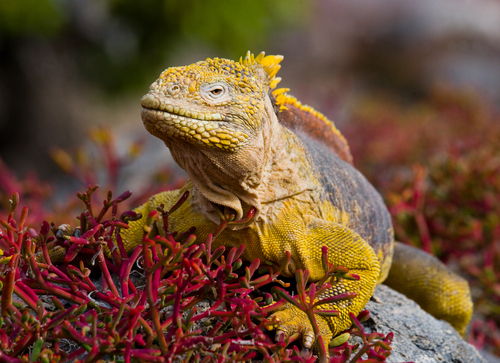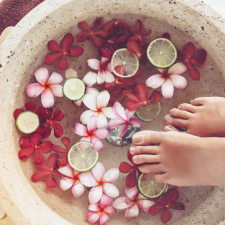
What do Charles Darwin, Richard Gere, Bo Derek and Prince Charles have in common?
They’ve all be to and been touched by the Galápagos Islands – that archipelago of volcanic islands and numerous tiny inlets wham bang on the equator almost 1000 kilometres from the nearest landmass – Ecuador, to which they belong.
They are not alone! Every year more than 200,000 people visit, some on their second, third and fourth visit. So, what is the drawcard?
Charles Darwin would tell you it’s the diversity and uniqueness of the birds, animals and the islands themselves which make Galápagos an unforgettable experience. In fact, he wrote the book to explain it, and evolution. Controversial to this day.
Most of us go because we’ve seen it on TV, read about the amazing wildlife and can’t wait to go swimming with seals and all the other unafraid sea fauna. But before you go paddling over the rainbow coral and watch the green turtles or pink flamingos frolicking in the sun you’ve got some serious travel planning to do.
Here’s our guide to the best way to see the Galápagos Islands:
Flying there
You’ll travel half way around the world to the middle of nowhere. There are no international airports on the island. Instead you will transit via Quito or Guayaquil in Ecuador. Plan a little extra time to see their sights before leaving the mainland. There are two airports on the islands (San Cristobal island or Baltra Island). It really won’t matter which you go to, just opt for the one closest to your destination.
Ship vs land based
Now, the fun begins: Do you take a cruise or stay land based? You’d think this was a no brainer given Galápagos is made up of 15 main islands, 4 smaller ones and 107 rocks. Well not so fast! Basing yourself on one of the three inhabited islands and exploring the other island via day trips is much less pricy, so if money is a consideration then this can be a good option. And you can mingle with locals more easily, getting a better feel of life on the archipelago.
The downside is that land based visitors don’t get to more distant sites such as Genovesa and Española which are some of the best in Galápagos. Sailing from place to place usually takes place at night on most cruises which means you wake up in a new destination all ready for a full day exploration. Definitely more time efficient.
Small or large ships
Now we are not talking ocean liners here – the largest holds 100 passengers. The upside is that these ships are more stable in the water and have more amenities such as glass bottom boats, spas, pools or cooking lessons.
In contrast, small ships often hold around 12 to 18 passengers. That means more personalized service as you really get to know your crew. Smaller boats also get to go to places the bigger ships can’t, creating greater intimacy for your wildlife experience. Oh, and bigger ships take more time for everyone to get on and off loosing valuable hiking and snorkelling time – another tick for small boat efficiency!
Whichever you opt for there will be registered naturalists aboard to guide your travels and explain what makes these islands so very special. And all cruises offer fabulous excursions – usually twice a day: hikes, kayaking, snorkelling, not to mention the moments on deck watching dolphin acrobatics or catching the last of the sun’s rays.
Where to go?
Most cruises offer five or seven day itineraries with set departure dates and set routes. There are more than 60 approved visitor sites across the archipelago and where you go will influence what wildlife you see. Swimming with sea lions commonly top travellers wish lists and that can be done just about anywhere. For sightings of penguins and blue footed boobies then head to the westernmost islands. Flightless cormorants are found only on Fernandina and Isabela islands while the only place to see waved albatrosses is on Española. Other favourites like the male frigatebirds turning their wrinkled throat sacs into inflated red balloons and prehistoric marine iguanas can be found just about anywhere.
When to go
There is no bad time to visit the Galápagos, each season is unique and wonderful and you’re guaranteed a good experience. June to December are cooler and dryer months, so swimming can be chilly. January to May while warmer are wetter, but, hey rain creates beautifully clear blue skies between showers – all the better for photography.
Seasickness
Yes, it is a curse and sadly many of us are affected. If you are prone to it, then a land based tour may be best. Most of the navigation is done at night, and sleeping aboard can be difficult for some people no matter the size of the boat. Many of the smaller ships are catamarans with two hulls, making them more stable than you’d think. And some even have balconies – the fresh air will help.
Final Tips
Before you go:
• Learn to snorkel,
• Buy a Galápagos wildlife guide
• Take plenty of memory cards for your camera
• And don’t forget the insect repellent
• Watch the sun and drink plenty of water


